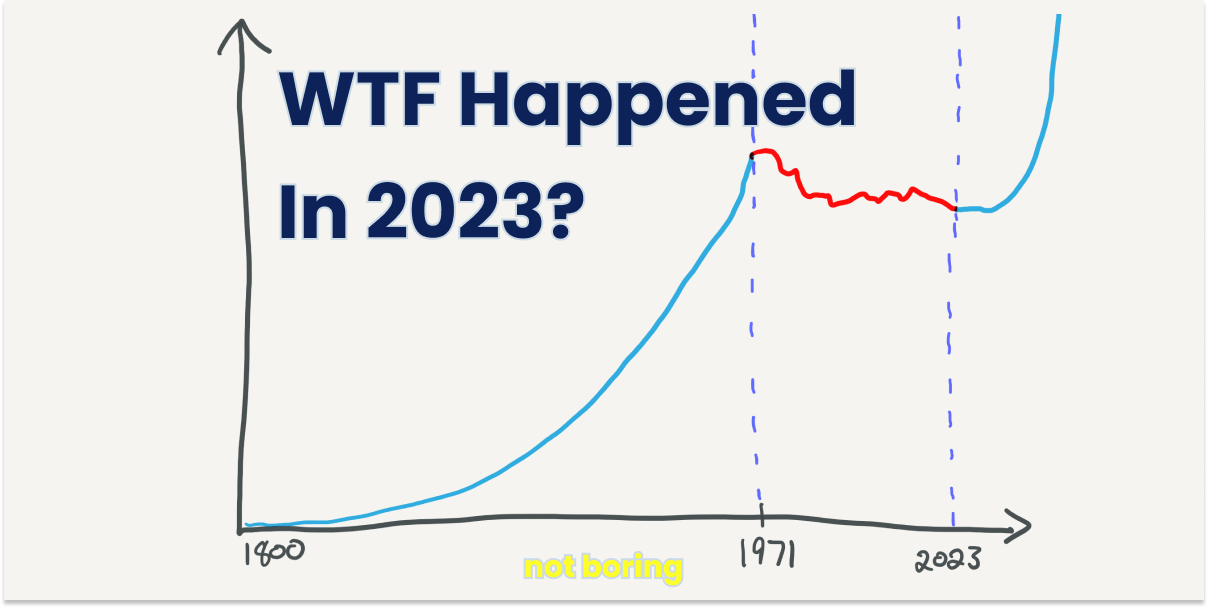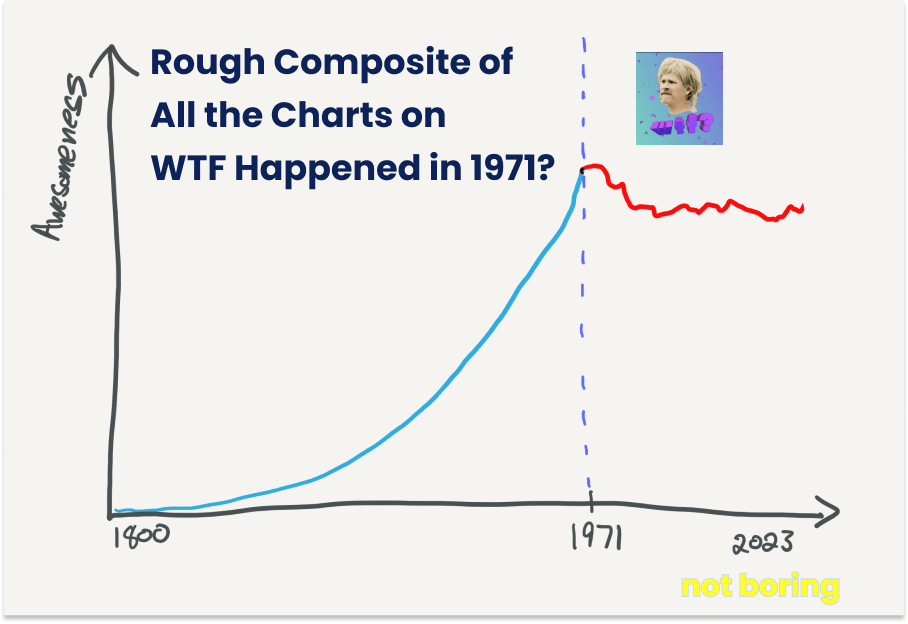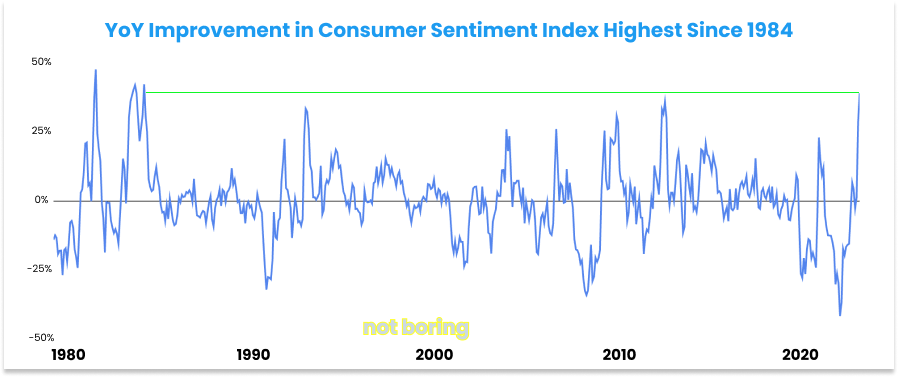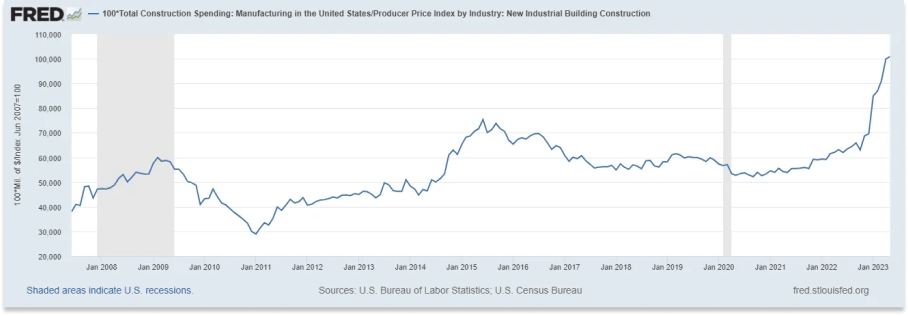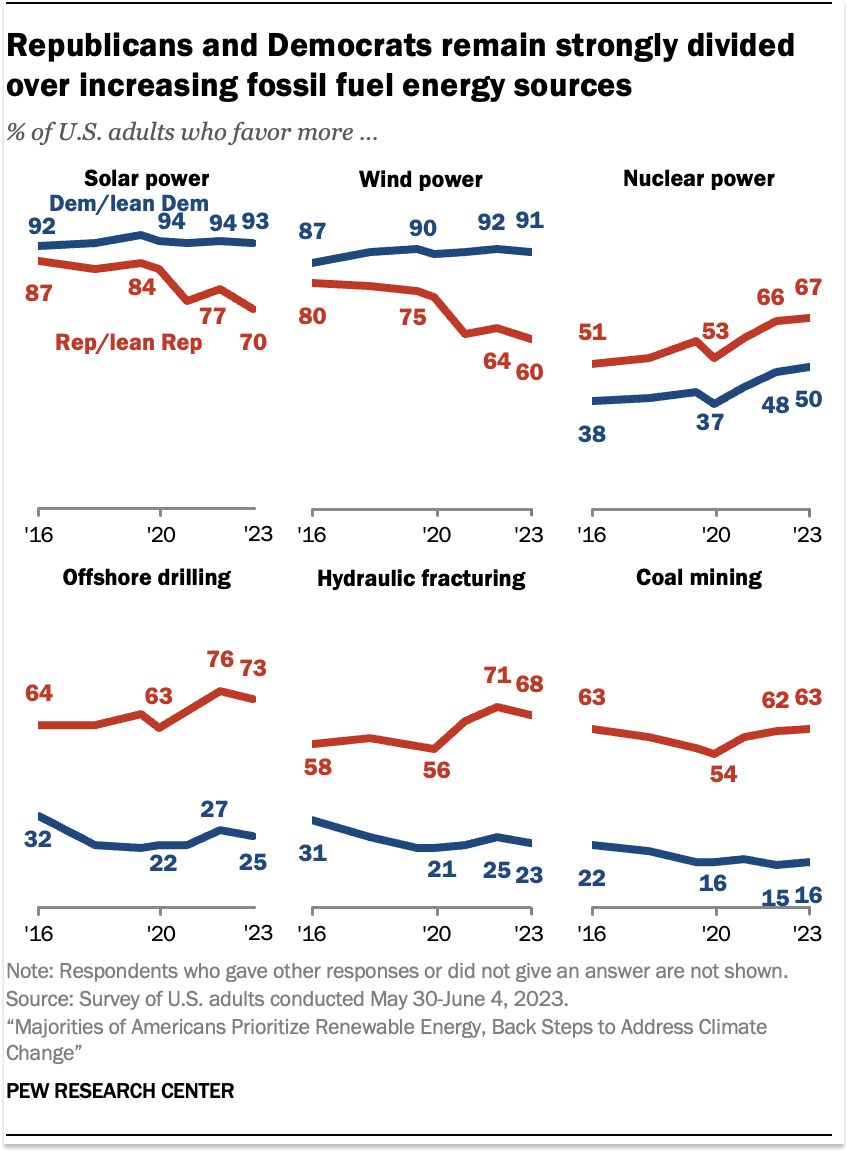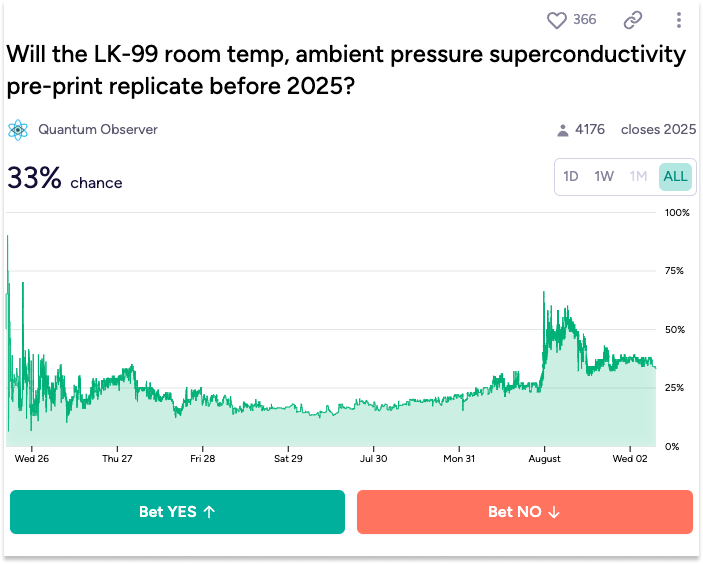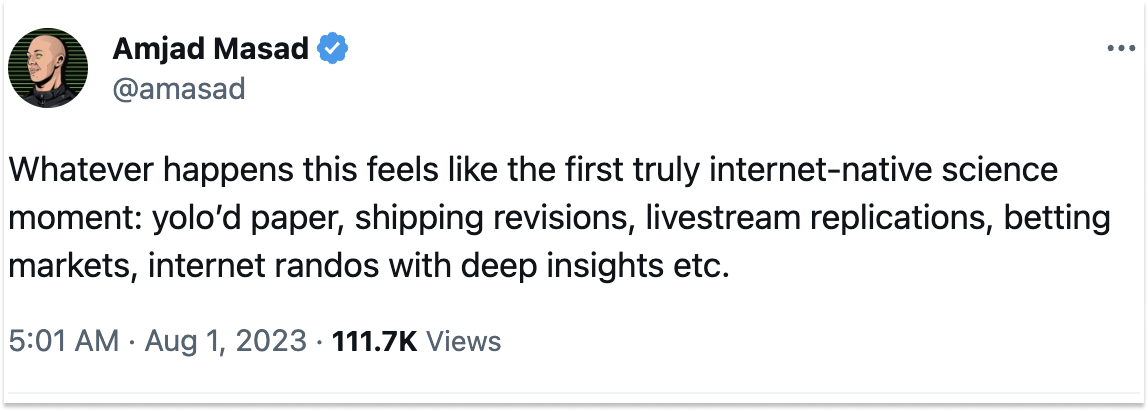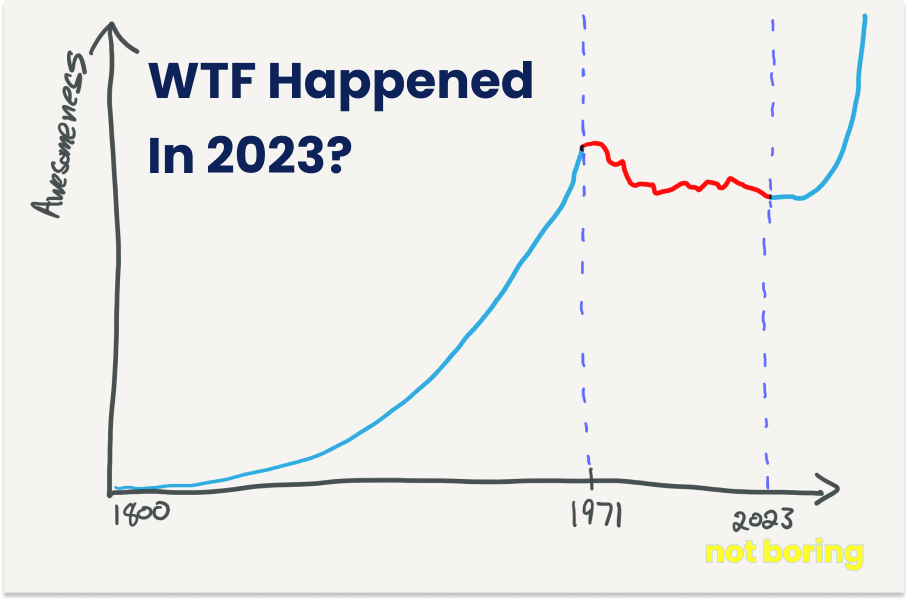Not Boring by Packy McCormick - WTF Happened In 2023?
Welcome to the 797 newly Not Boring people who have joined us since last Tuesday! If you haven’t subscribed, join 209,294 smart, curious folks by subscribing here: Today’s Not Boring is brought to you by… Pesto Pesto is the easiest way to recruit and hire high-quality developers in emerging markets. Through its plug-and-play platform, you can quickly source, recruit, and hire affordable top-tier developers. Pesto wades through the noise so you don’t have to. Pesto becomes your local team to:
Pesto moves fast – you can go from demo to developer in less than two weeks. The platform is already used by dozens of enterprise clients and startups like Alloy, Pulley, and Snorkel AI to scale their engineering teams. Give them a shot & enjoy a 25% discount on your first hire when you mention "Not Boring". Hi friends 👋, Happy Wednesday! Apologies for getting this one out a day late — I was a little under the weather but back at it and feeling good. Every week in the Weekly Dose of Optimism, we highlight five stories of the incredible things that humans pull off. The Weekly Dose started as a small fight back against the prevailing sense of pessimism in the air that I described in Optimism. Recently, though, Dan and I have noticed the winds shifting. There’s a growing sense of optimism beyond this little newsletter. We are so back. Let’s get to it. WTF Happened in 2023?When economic historians in 2073 look back on the past fifty years of growth and abundance, they’ll pull up a bunch of charts, and one question will jump out at them: WTF Happened In 2023? Maybe I’m drunk on a cocktail of optimism and technological progress, but it feels like 2023 is the turning point: from Stagnation to Acceleration. The last big turning point is clear in hindsight, so clear that there’s a whole website dedicated to a single year: WTF Happened in 1971? It’s just dozens of graphs showing that things kept getting more awesome until 1971 and then stopped getting more awesome after 1971. Economist Tyler Cowen calls the period since 1971 The Great Stagnation, a half-century slowdown in productivity and innovation. It wouldn’t have been obvious in 1971 that things were going to slow so dramatically. The data might have looked a little wobbly, but that happens year to year. There might have been clues, though, if you were looking: the dollar depegged from gold, regulation was increasing, America was losing in Vietnam, growth fell out of vogue. You might have picked up a shift from optimism to pessimism, which trickled into policies, corporate decisions, and then, years later, into the data. I think we’re at a similar but opposite point in 2023. We won’t be able to see it in the data for a while, but you can already feel it in the air. It’s just wisps, and I’m admittedly cherry-picking, but the wisps are everywhere. We’re shifting from indefinite pessimism and insanity to what I'll call pragmatic optimism - a balanced, realistic optimism focused on achievable progress. Over the past 18 months, prevailing sentiment became irrationally pessimistic based on how bad we heard everything was, and turned pragmatically optimistic based on our lived experience that it wasn’t. Social media amplified and spotlighted extreme views, and after the violent amplification of extreme views on both ends, we’re settling somewhere more sane. Reality is winning, and reality is pretty good, actually. At the same time, we’re in a period of technological acceleration. We talk about it all the time here: AI finally works, the economics of space pencil out, fusion startups are making progress, renewable energy is booming, and now we might even get room-temperature superconductors. Optimism shapes reality, and an optimistic foundation is necessary to leverage instead of impede the benefits of these technologies. In short: it’s a perfect storm of sentiment shift and technological progress that could mark the end of The Great Stagnation and the beginning of The Great Acceleration. I know, I know, when you have a hammer, everything looks like a nail. Last summer, in Optimism, I argued that:
So of course I would overindex on optimism as the kindling for The Great Acceleration. But I really do think optimism is a necessary precondition, and there are signs that pragmatic optimism is both back and shaping reality. I’ll give five examples:
They’re just wisps at this point, but taken together, they begin to paint a picture. The Dimon SpeechThe first time my Spidey Sense really started to tingle was when, right around the 4th of July this year, a video of JP Morgan CEO Jamie Dimon speaking at The Economic Club went viral: 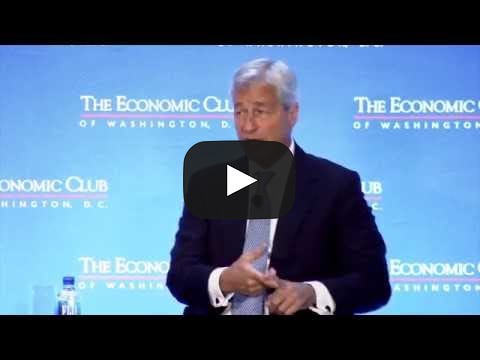 Dimon’s was the most unabashedly optimistic message about America’s position from any major leader in a long time, the antithesis of that Jeff Daniels rant against American Exceptionalism in the opening episode of Newsroom. People cheered the message, and called for a Dimon 2024 Presidential run. He might run, no idea, although it seems unlikely this late in the game. But one thing is for certain: this video was not part of a 2024 Presidential campaign. This video was from 2016. That people received a patriotically optimistic rant from a Big Bank CEO enthusiastically was telling on its own, but the fact that the video floated around the internet ether for seven years until people were ready for it is fascinating. In 2016, Americans wanted to Make America Great Again; in 2023, they celebrated the fact that, despite its issues, it’s already pretty great. One reason we may have been more receptive to that message in 2023 is that, in the face of what we were told would be a brutal recession, the American economy stood strong. Consumer Sentiment and the EconomyPessimists and extremists overplayed their hands during periods of uncertainty and are being exposed; now optimism and sanity are taking root. To be fair, permabulls like me got too excited during the COVID bull run, which invited macro bears to gleefully predict that the world was going to fall apart once the Fed started raising rates. Consumer sentiment sank to an all-time low of 50 last June as people bought into the doom. And then… the economy didn’t fall apart. It’s doing pretty great, actually, as Noah Smith laid out on Monday. Real GDP growth hit 2.4%. Inflation cooled to 3%. Age-adjusted employment is the best it’s ever been. As a result, consumer sentiment rebounded sharply to 71.6 in July, marking the fastest growth in sentiment since 1984 at 39%. In absolute terms, 71.6 is still low, well below the 85.6 average over the 70 year life of the UMich survey, but if we’re looking for shifts in sentiment, that relative improvement is an important signal. People can feel the momentum. We’re in no way out of the woods. The data could turn. But as it stands, it’s almost as if we simulated the worst case scenarios virtually and came back more confident in the real world. On the ground, while there are weaknesses in real estate and household wealth, and while a recession may still hit, right now jobs are plentiful, wages are growing, inflation is cooling, inequality is shrinking, and manufacturing is booming. Infrastructure and ManufacturingSpeaking of building things… one of the biggest knocks against America is that we’ve forgotten how to build big things fast. That’s a well-deserved criticism and both a symptom and cause of our stagnation. As I wrote in How to Fix a Country in 12 Days, “Americans built the Empire State Building in just 410 days; NYC’s Second Avenue Subway project, California’s High-Speed Rail, and Boston’s Big Dig have missed their timelines by decades and their budgets by tens of billions of dollars.” But that same piece highlighted a tiny glimmer of hope: the I-95 Rebuild. For 12 days, people were captivated by Philadelphia’s effort to rebuild a damaged stretch of highway as quickly as possible. Look, it was just a temporary fix to a piece of road less than half-a-football-field long. It’s easy to imagine a version of the world in which the project was met with bemused cynicism, but people were just genuinely enthused. Americans want to live in a country that builds things again. On its own, it was a fun diversion, but the I-95 rebuild came against the backdrop of a country that’s trying to prove to itself that it can build again. Construction spending on manufacturing has shot up to record highs this year, spurred by the CHIPs Act and Inflation Reduction Act. The building debate seems to have moved from a high-level battle over whether we can or should build big things again into the nitty gritty details: permitting reform, job training, immigration. This is what I mean by pragmatic optimism: excitement coupled with a focus on the specific challenges we need to overcome to build the future that we want. Nuclear EnergyIn nuclear energy, too, the conversation is shifting to focus on specific challenges to tackle. Nuclear’s resurgence signals two healthy things:
Certainly, the War in Ukraine played a role in bringing sanity back into the conversation. Germany’s hypocrisy – favoring Russian gas and dirty coal to clean, abundant nuclear – forced people to reexamine their assumptions. When they did, nuclear came out looking good. In a recent Pew poll, nuclear power was the only energy source that saw growing support from both Democrats and Republicans. Now, while there’s still work to be done to counter the damaging effects of the anti-nuclear disinformation campaign that persisted throughout The Great Stagnation, the most pressing challenges are more practical: we want more nuclear power, but it’s too slow and expensive right now. Yesterday, Georgia’s Vogle Unit 3 reactor, the first newly constructed nuclear unit in the US in over 30 years, began commercial operation. That’s a huge win, but it also highlights the need to get faster and cheaper. It arrived seven years late and $17 billion over budget. The future of nuclear power rests on the practical instead of the ideological. How can we untangle the messy web of regulation, financing, and construction to build new nuclear capacity quickly and cheaply? What role can small modular reactors and other advanced reactor designs play? These are questions that a pragmatically optimistic society can tackle. SuperconductorsThen, of course, there are the superconductors, which are simultaneously a product of the pragmatic optimism (the Race to Replicate) and, if replicated, a driver of pragmatic optimism (how can we manufacture LK-99 at scale and what can we build with it?). If LK-99 is legit and we can manufacture it at scale (big ifs!), it does seem to be the kind of technological breakthrough that could unleash a Great Acceleration. This thread has 500 replies with the things people are “most stoked for if LK-99 turns out to be a room temp superconductor.” The prediction market Manifold currently puts the odds of replication at 34%, but whether or not it replicates, the pragmatic optimism on display has been phenomenal. I think this superconductor experience is something that could only happen in the current environment: pragmatic optimists connected across the globe watching science experiments like sports and getting really excited but waiting for a bunch of national and academic labs and assorted internet geniuses to replicate before getting too excited. As Amjad put it: I’ve had a version of this piece in my drafts for a month, long before I’d ever heard the words “room-temperature superconductor” strung together. Instead of the prime mover of backness, it feels like the Race to Replicate is a confirmation that things really are shifting. Again, it’s just a wisp. But against the drumbeat of declining trust in institutions, it’s beautiful to see people around the world say, “Fuck it. We’ll do it ourselves.” Growth is back on, but The Great Acceleration will be a different flavor than pre-1971 growth. The Gains from Truly Mobilizing the InternetIn a 2020 follow-up to his Great Stagnation book, Tyler Cowen wrote a blog titled What might an end to the Great Stagnation consist of?. He concluded with this observation: “The gains from truly mobilizing the internet may in fact right now be swamping all of the accumulated obstacles we have put in the way of progress.” I’m not sure if this is how he meant it, but I think the internet has played a crucial role in reigniting optimism, even if the path there was a bit painful. It amplified the craziest views, and I think we’re starting to realize that most of us are happier somewhere in the middle. It helped spread doom and gloom, forcing a confrontation with reality that reality is starting to win. It touches each of the wisps I covered in this essay, in direct or indirect ways. And it made the global race to replicate a non-peer reviewed paper both possible in the first place and a captivating live event. The internet also enables a healthy self-policing optimism – the hive mind swarms overly grandiose or underly specific claims. It’s worth highlighting your own obstacles and inviting others to help solve them before the internet identifies them for you and labels you a fraud. In Working Harder and Smarter, I argued that the last fifty years, spent developing software and services at the expense of Total Factor Productivity, weren’t a period of stagnation at all, but a necessary precondition for the accelerated progress we can make when we combine innovation in bits and atoms. A year later, we’re starting to see signs that that may be true. After decades of dealing with the instability of a shift from centralization to decentralization, it feels like we’re settling into a more stably decentralized world. Instead of waiting for peer review, people are replicating themselves. Instead of slowly pushing infrastructure projects through bureaucracy, politicians are rallying support online. Instead of relying on potentially hostile enemies for energy and manufacturing, countries are building capabilities at home. My evidence is just wisps and hints. A more fact-based argument could be made that we are not so back, that it really is so over. The superconductor might not replicate; current odds are that it won’t. AI could be regulated to death or cause real harm. A recession may still come. Polarization is still a thing. Governments and institutions are slow to shift, even when people want them to. Progress could increase inequality and lower happiness, since we so often measure happiness on a relative basis. In fact, there’s a good chance that if you polled people today, most of them would think that I’m crazy for suggesting that optimism is on the rise. Maybe my brain’s been warped by the internet, or the X algo has just gotten really good at showing me what I want to see. My hunch, though, is that things look particularly bleak before the shift, just like things looked particularly rosy in 1970. Those wisps and many that we haven’t covered, advances in biotech, education, space, defense – we didn’t even talk about AI! – are early clues that things are shifting. Maybe you feel it. The Great Acceleration is not inevitable. Cruft built up over the last fifty years of stagnation threatens to jam the gears of progress. Regulations are harder to tear down than they are to build up. We’re already facing a shortage of skilled laborers needed to build the things we’re building now – like chips and houses – and we’re going to need a lot more: nuclear engineers, machinists, materials scientists, craftspeople. We need politicians who reflect the vigor and drive of the people. We need to demand excellence of ourselves. There are a million details to tackle, but I think we have the momentum to tackle them. If we get it right, future generations will look back admiringly and ask, WTF Happened In 2023? Thanks to Dan for editing! That’s all for today! We’ll be back in your inbox on Friday with the Weekly Dose. Thanks for reading, Packy |
Older messages
Weekly Dose of Optimism #53
Friday, July 28, 2023
Superconductors, Anduril, Nuclear Rockets, Self-Destructing Cancer Cells, LLaMA2, Urbit
In Defense of Strategy
Tuesday, July 25, 2023
Channeling Execution in the Right Direction
Weekly Dose of Optimism #52
Friday, July 21, 2023
South Park AI, Llama 2, Geothermal, Alzheimer's, Molecular Manufacturing
When to Dig a Moat
Tuesday, July 18, 2023
Uncertainty, Success, and Defensibility
Weekly Dose of Optimism #51
Sunday, July 16, 2023
Are We Back?, Hard Things, Charm Industrial, Astranis, x.ai, Regfluencers
You Might Also Like
🔮 $320B investments by Meta, Amazon, & Google!
Friday, February 14, 2025
🧠 AI is exploding already!
✍🏼 Why founders are using Playbookz
Friday, February 14, 2025
Busy founders are using Playbookz build ultra profitable personal brands
Is AI going to help or hurt your SEO?
Friday, February 14, 2025
Everyone is talking about how AI is changing SEO, but what you should be asking is how you can change your SEO game with AI. Join me and my team on Tuesday, February 18, for a live webinar where we
Our marketing playbook revealed
Friday, February 14, 2025
Today's Guide to the Marketing Jungle from Social Media Examiner... Presented by social-media-marketing-world-logo It's National Cribbage Day, Reader... Don't get skunked! In today's
Connect one-on-one with programmatic marketing leaders
Friday, February 14, 2025
Enhanced networking at Digiday events
Outsmart Your SaaS Competitors with These SEO Strategies 🚀
Friday, February 14, 2025
SEO Tip #76
Temu and Shein's Dominance Is Over [Roundup]
Friday, February 14, 2025
Hey Reader, Is the removal of the de minimis threshold a win for e-commerce sellers? With Chinese marketplaces like Shein and Temu taking advantage of this threshold, does the removal mean consumers
"Agencies are dying."
Friday, February 14, 2025
What this means for your agency and how to navigate the shift ͏ ͏ ͏ ͏ ͏ ͏ ͏ ͏ ͏ ͏ ͏ ͏ ͏ ͏ ͏ ͏ ͏ ͏ ͏ ͏ ͏ ͏ ͏ ͏ ͏ ͏ ͏ ͏ ͏ ͏ ͏ ͏ ͏ ͏ ͏ ͏ ͏ ͏ ͏ ͏ ͏ ͏ ͏ ͏ ͏ ͏
Is GEO replacing SEO?
Friday, February 14, 2025
Generative Engine Optimization (GEO) is here, and Search Engine Optimization (SEO) is under threat. But what is GEO? What does it involve? And what is in store for businesses that rely on SEO to drive
🌁#87: Why DeepResearch Should Be Your New Hire
Friday, February 14, 2025
– this new agent from OpenAI is mind blowing and – I can't believe I say that – worth $200/month

